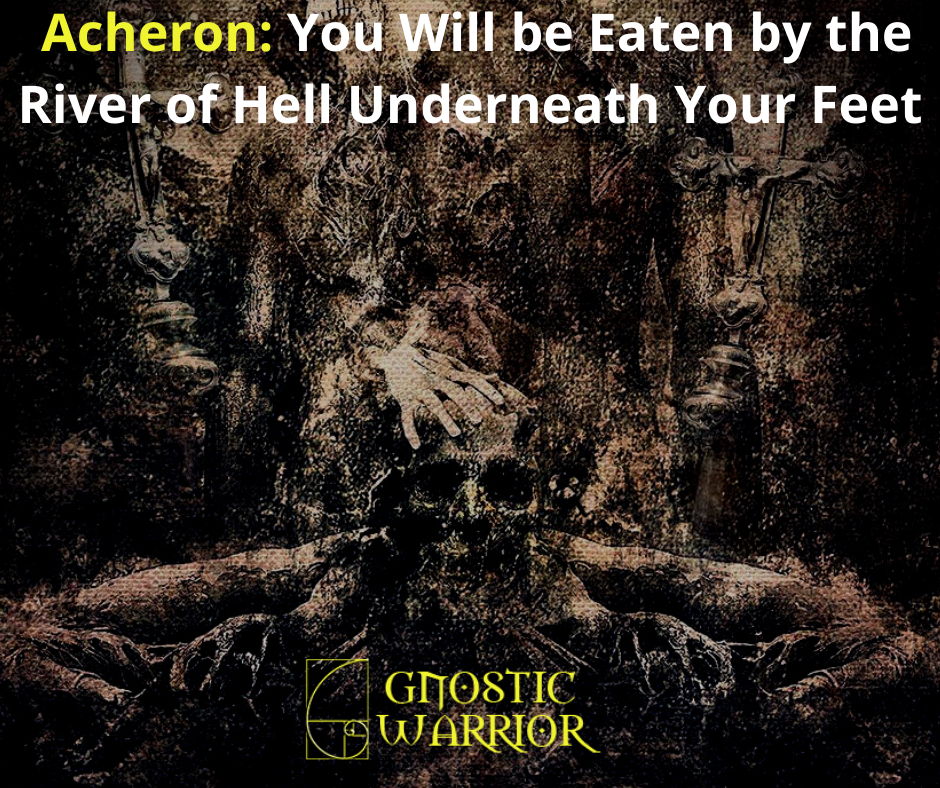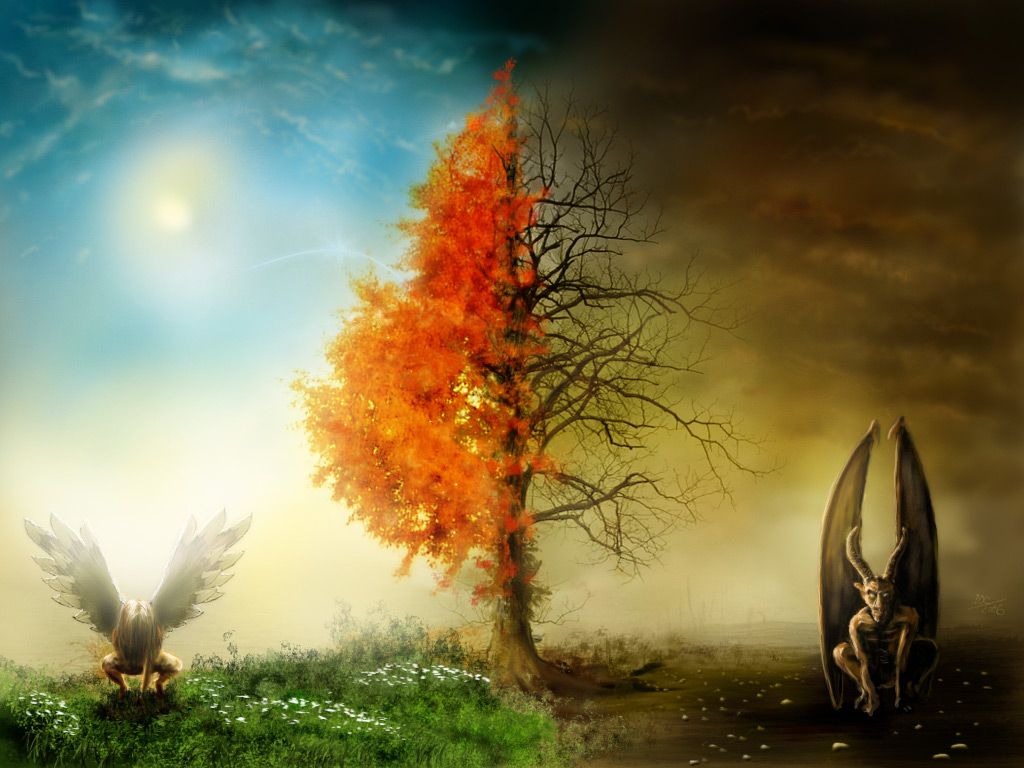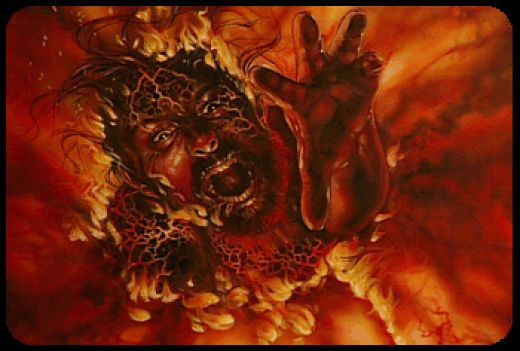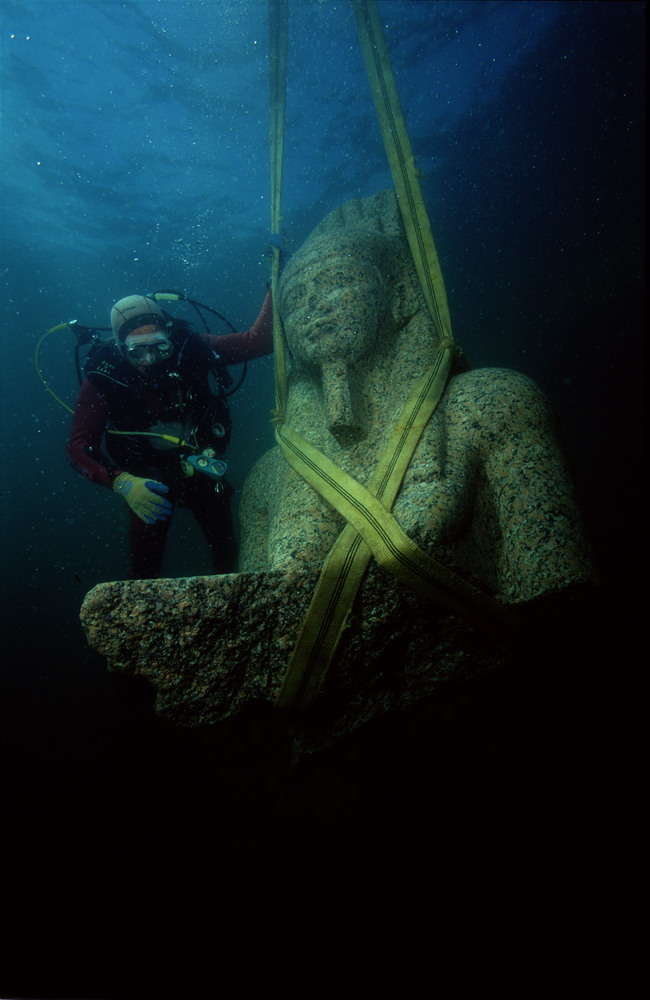In Ancient Greece, mountains with subterranean caves served as entrances to a deity and a place called Hades or Tartarus, which would correspond to our modern concepts of hell in Christianity. These unique caverns were considered ancient portals to the underworld, which the Greeks had described as “the Abyss which was a type of legal court that served as human dungeon and hall of punishment” where, according to Plato, “souls are judged after death and where the wicked received divine punishment.”

To the Ancient Greeks, the Abyss, or what is also called Acheron was a place that was located within the bowels of the earth that acted as a place of punishment and judgment ruled by a type of Terrestrial King or “living entity or hive mind” with a military regime of what are called judges in the Scripture. It wasn’t Hades, where the already judged and damned remain, but more like a spiritual courthouse where the dead allegedly go in order to receive their sentences.
The modern equivalent of Acheron or Charon is Haros or Charos (Greek: Χάρος), which is said to be used in common phrases such as “from the teeth of Haros” (Greek: από του Χάρου τα δόντια) meaning to come close to death or “you will be eaten (i.e. taken) by Haros”.
In other Greek myths, Pluto is known as the “Prince of Acheron” who ruled the underworld in a place called Tartarus, which is described as a “meadow” and “thick-shaded and dark,” where the Acheron encircles “the roots of the earth.” There was a unique wall or gate here known as “Pluto’s Gate or the Ploutonion at Hierapolis” in the ancient city of Hierapolis.
This description of “the roots of the earth” and a “meadow” that is “thick-shaded and dark when compared to other ancient and modern descriptions, gives more clues to its whereabouts. We also know that these earth’s roots are connected to Hades, Tartarus, and the place of judgment where Plato tells us “souls are judged after death and where the wicked received divine punishment.”
Plato also mentioned that the Acheron flowed in the opposite direction from Oceanus beneath the earth under desert places. Virgil stated that Acheron with the other infernal rivers in his description of the underworld where he mentions Juno, “flectere si nequeo superos, Acheronta movebo: ‘If I cannot bend the will of Heaven, I shall move Hell.” Sigmund Freud has written in “The Interpretation of Dreams,” that the myths of Acheron were related to a “psychological underworld beneath the conscious mind.”
This would align with my modern interpretation as these great myths relate to modern science and the fact that there is an internet of fungi/molds beneath and within our own feet and bodies. Microscopic entities that we live symbiotically with but it appears as soon as we act subhuman, live unhealthily, or as Christians would say, sin, they become pathogenic and cause illness, diseases, and death in humans.
This would be what the Ancient Greeks would call the Abyss and bowels of the earth in which people who live in this material noosphere via their own second brains or bowels become connected and controlled. A type of symbiotic relationship that normally ends up in doom for the unsuspecting person who has transgressed against these ancient laws of being human.
The very microorganisms who I contend with and documented via my Toxic Mold and Fungal Infection articles are the internal and external microscopic legislators of the human race. Perhaps, this worldwide internet of the dead, the realm of Fungal Shades and its courts had first started here in Acheron?
When researching for the possible location of this mountain and names of these caves, I found an interesting story of an entrance to Tartarus in a place known as Thesprotia near a river called Acheron (Acherusia) and a cave called called “Aornum, Charon or Charonium (Χαρώνειον ἄντρον or χάσμα)” which gave forth poisonous vapors.
In various Greek legends, Aornum (Ancient Greek: Ἄορνον) was an oracle and the name of the cave that is alleged to be where Orpheus travels to recover his wife, Eurydice. It is also known as “Charon’s Cave”, which reflects the belief that it was an entrance for Tartarus or Hades. Strabo also has referred to this legend in describing Aornum and also speaks of other Charonia ( Xapóvia ) where poisonous vapors rise.
For a place of judgment of the damned to be so dreaded and hellish, I find it interesting that Plato described Acheron as the second greatest river in the world, excelled only by Oceanus. The Orphic mysteries had also claimed that the first entity or who we may call the primordial man from which the Light and the cosmos was born here.
The same place that is also known as Tartarus, Hades, and Hell, where, according to Plato, “souls are judged after death and where the wicked received divine punishment.”
When I read these stories, and search for clues of this mountain, river, and cave, I immediately recognize parallels with the ancient myth of the infant Zeus who was placed inside a cave on the Holy Island of Crete by the Magi priest known as the Curetes or Telchinines to protect the child from being “eaten by his father,” Chronos.
This makes sense because Pausanias had written that among the sights of Thesprotia was a sanctuary of Zeus which is near Cichyrus and a lake called Acherusia, and a river called Acheron.
These Greek myths of hell being a place of judgment, that is underneath our feet, and also being eaten can also be connected to the ancient Phoenicians/Hebrews concepts of Mot or Mut, or māwet/mōt, which is the Hebrew word for ‘death’. Muth was described by Philo of Byblos as the equivalent of both Thanatos (Death personified) and Pluto. It is also, however, the name of a specific Canaanite deity or demon, Mot (more precisely Mōtu), known especially from the Ugaritic literature.
In Hebrew scriptures, Death (“Maweth/Mavet(h)”) is sometimes personified as a devil or angel of death (e.g., Habakkuk 2:5; Job 18:13). In both the Book of Hosea and the Book of Jeremiah, Maweth/Mot is mentioned as a deity to whom Yahweh can turn over Judah as punishment for worshiping other gods
In some myths, Mot or Death sends back a message that his appetite is that of lions in the wilderness, like the longing of dolphins in the sea and he threatens to devour Ba’al himself. It has been said that the Jewish tradition of Passover may have begun as a ritual connected with the myth of Mot killing Baal, who was the God of Fire (Phosphorus or Latin Lucifer).
Phoenician historian and a priest of Byblos, Sanchuniathon (Phoenician: 𐤎𐤊𐤍𐤉𐤕𐤍) said;
From this was produced Môt which is the Semitic word for ‘Death’ but which the account says may mean ‘mud’ which some call Ilus (Mud), but others the putrefaction of a watery mixture. And from this sprung all the seed of the creation, and the generation of the universe.
And there were certain animals without sensation, from which intelligent animals were produced, and these were called Zophasemin, that is, the overseers of the heavens.”
Sancuniathon tells us Môt means Death, which some call Ilus (Mud), which is described as a “putrefaction of a watery mixture,” from this sprung all the seed of the creation, and the generation of the universe. He then explains that this Mot AKA Ilus (Mud)’s name is also Cronus whose father is Our-anus situated in the middle of the earth. He had written;
“In the thirty-second year of his power and reign, Ilus, who is Cronus, having laid an ambuscade for his father Ouranus in a certain place situated in the middle of the earth, when he had got him into his hands dismembered him over against the fountains and rivers.
There Ouranus was consecrated, and his spirit was separated, and the blood of his parts flowed into the fountains and the waters of the rivers; and the place, which was the scene of this transaction, is shewed even to this day.”
In Greek mythology, Cronos (Cronus or Kronos) was the Lord of the Harvest and in Rome, he was called Saturn. He was the leader of the first generation of Titans who overthrew his father Ouranus and ruled during the mythological Golden Age and to prevent any of his sons or daughters from ruling in his stead, he had a habit of “eating them.”
After Rhea secretly gave birth to Zeus in Crete, to prevent Cronos from eating the infant, she handed Cronus a stone wrapped in swaddling clothes, also known as the Omphalos Stone, which he swallowed, thinking that it was his son, Zeus.
Once Zeus had grown up, he forced his father Cronus to regurgitate the contents of his stomach in reverse order: first the stone, which was set down at Pytho under the glens of Mount Parnassus to be a sign to mortal men, and then his two brothers and three sisters.”
The story of Cronus eating his children is interpreted by some people like me as an allegory to a specific aspect of time held within Cronus’ sphere of influence. This sphere I contend deals with an ancient science that connects Cronus to our Stomachs or Gi Tracts, which science has proved is our second brains and can influence our thoughts in a bad way, which may explain his fierce nature and without hesitation, he eats his own children.
The meaning of Cronos or Kronos is composed of the words ‘kro and nus’. It is related to the Hebrew words קָרוֹב karov and קְרוֹבָה krova, which means close or near and the meaning of the word kerev isinterior, inside; (in plural) innards. בְּקֶרֶב Bekerev, means among, amidst; internally, on the inside and קְרָב krav is battle, combat; struggle, race, competition.
The location of this mountain where this entry to Hades is still disputed amongst academians being either the Psychro Cave (Greek: Σπήλαιο Ψυχρού), which is claimed to be the Diktaean Cave (Greek: Δικταῖον Ἄντρον Diktaion Antron) in Lasithi plateau of eastern Crete or Mount Ida, which is the exact location where who Josephus called the Idumean had spawned and who we call the Tribe of Judah.
The same Tribe of David, Solomon, and later Jesus.
As I explain in my previous article, Pergamon: The Throne and City of Satan, in the Christian Scripture, we read of the home of Satan is located in Revelation 2:12 at Pergamos. Where Satan’s throne is,” and home to one of the seven churches written about by Saint John in the Book of Revelation.
It was the original uncorrupted church of Christ that later became the seat of Antichrist or Throne of Satan.
Satan’s throne was located here near Mount Ida at Knossos (The City of Gnosis), which was also known anciently as the Ancient Naval Center of the Old World. The name Navy or Naval means “a central point; and or a middle” from the Latin medius, meaning middle, and terra, meaning earth, and also the center of the human bowels and what we call our second brain.
So it would make sense that this location would have been chosen as being Holy due to its age, history, and rituals performed within these caves and on this soil for what I contend, thousands of years until the traditional religion was conquered in favor of a corrupted one for world dominion.
“And it is called Akheron (Acheron) since within the bosom of the earth it goes forward pouring forth pains.” (Melanippides, Frag 759 (from Stobaeus, Anthology -Greek lyric 5th B.C.)
I will let the great Plato finish my thesis to put this in perspective on how this great human drama plays out and I contend, has been the heiros gamos for the last 3,000 plus years.
“[The] streams are many and great and of all sorts, but among the many are four streams, the greatest and outermost of which is that called Okeanos (Oceanus), which flows round in a circle, and opposite this, flowing in the opposite direction, is Akheron (Acheron), which flows through various desert places and, passing under the earth, comes to the Akherousian (Acherusian) Lake.
To this lake the souls of most of the dead go and, after remaining there the appointed time, which is for some longer and for others shorter, are sent back to be born again into living beings. The third river flows out between these two, and near the place whence it issues it falls into a vast region burning with a great fire and makes a lake larger than our Mediterranean sea, boiling with water and mud.
Thence it flows in a circle, turbid and muddy, and comes in its winding course, among other places, to the edge of the Akherousian lake, but does not mingle with its water.
Then, after winding about many times underground, it flows into Tartaros at a lower level.
This is the river which is called Pyriphlegethon, and the streams of lava that spout up at various places on earth are offshoots from it. Opposite this the fourth river issues, it is said, first into a wild and awful place, which is all of a dark blue color, like lapis lazuli. This is called the Stygios (Stygian River), and the lake which it forms by flowing in is the Styx.
And when the river has flowed in here and has received fearful powers into its waters, it passes under the earth and, circling round in the direction opposed to that of Pyriphlegethon, it meets it coming from the other way in the Akherousian Lake. And the water of this river also mingles with no other water, but this also passes round in a circle and falls into Tartaros opposite Pyriphlegethon. And the name of this river, as the Poets say, is Kokytos (Coytus). Such is the nature of these things.
Now when the dead have come to the place where each is led by his genius (daimon) [i.e. by Plato’s equivalent of Hermes Guide of the Dead], first they are judged and sentenced [i.e. by the Judges of the Dead], as they have lived well and piously, or not.
And those who are found to have lived neither well nor ill, go to the Akheron and, embarking upon vessels provided for them [i.e. the equivalent of Kharon’s (Charon’s) skiff], arrive in them at the lake; there they dwell and are purified [i.e. by the equivalent of the Erinyes], and if they have done any wrong they are absolved by paying the penalty for their wrong doings, and for their good deeds they receive rewards, each according to his merits.
Those who are curable, but are found to have committed great sin–who have, for example, in a moment of passion done some act of violence against father or mother and have lived in repentance the rest of their lives, or who have slain some other person under similar conditions–these must needs be thrown into Tartaros, and when they have been there a year the wave casts them out, the homicides by way of Kokytos, those who have outraged their parents by way of Pyriphlegethon.
And when they have been brought by the current to the Akherousian Lake, they shout and cry out, calling to those whom they have slain or outraged, begging and beseeching them to be gracious and to let them come out into the lake; and if they prevail they come out and cease from their ills, but if not, they are borne away again to Tartaros and thence back into the rivers, and this goes on until they prevail upon those whom they have wronged;
for this is the penalty imposed upon them by the judges.”

Moe is the founder of GnosticWarrior.com. He is a father, husband, author, martial arts black belt, and an expert in Gnosticism, the occult, and esotericism.









I think I have been to the void, it is dark, and it is what i considered, extremely boring, but at the same time very peaceful. I awoke in the middle of the night with what I would describe as “the small still voice”, and then it was like my consciousness was separated from me and I was “below” or within the Earth (and to the left), in the abyss, or void, mercurial waters or primordial waters. I was swimming, or floating, and not a soul was around me. This happened for a while, each night. Now that I found it, I think it has something to do with “first thought”. I got up each night, and was able to stay in the “waters” for about an hour and it felt like I was enmeshed in them, like I was one with them and the “substance” was all around me and within me. This happened about 8 months ago for about two weeks, and has happened sparingly ever since.